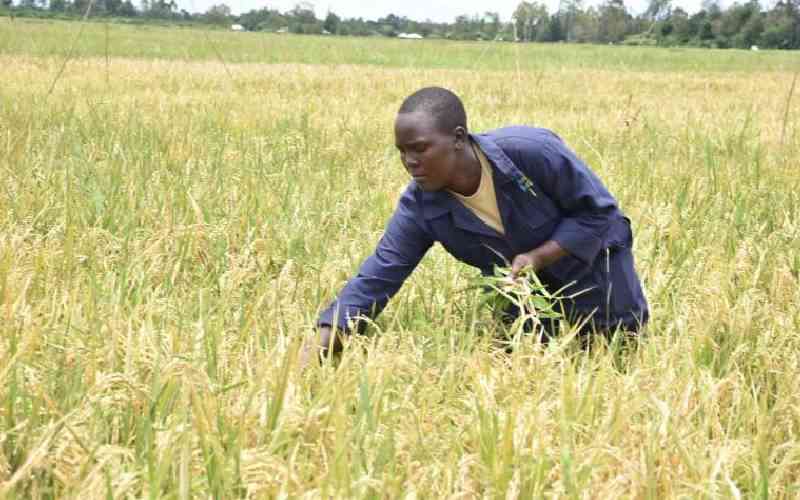
Madam Rina Anyango explains a point to a group of villagers seated under a tree at Khumutivo in Khwisero sub-county. The farmers are all ears. On this day, Anyango is teaching them how to control the lethal fall army worm.
To drive her point home, she has pictures of the deadly pest and illustrations on the worm’s life cycle.
“I volunteer to teach farmers early detection, mode of attack, control measures biological, physical and chemical control,” she says.
Anyango, a maize farmer, is part of the team from Vihiga and Kakamega counties selected to spearheard a unique ‘nyumba kumi’ style approach in fighting fall army worm menace.
PRO ACTIVE APPROACH
Anyango explains that under this proactive approach, farmers have formed village groups akin to the nyumba kumi initiative to tackle the fall army worm.
The idea was mooted by an NGO that saw the need for a participatory approach, as every farmer was struggling individually to cope. Sustainable Organic Farming and Development Initiatives, is involved in organic farming in Western. To start off, the farmers were organised in clusters.
“We have trained 150 lead farmers in Kakamega and Vihiga,” says Martin Kumbe, the organisation’s team leader. According to him, village blocks are effective way of rounding up the worms and wiping them out completely going forward.
VILLAGE BLOCKS
Each group has team leaders whose work is to lead a coordinated strategy in controlling the spread of the worm.
“We pool resources at village level to enable us buy recommended chemicals and important reading materials on control of the pest,” says Anyango.
A block consists of 85 villages which work for a common cause — combating the worm.
Given the pests' vicious nature, farmers are taught how to spot the invasion early enough and need for collective procurement of recommended pesticides and application of the same on all affected farms in good time.
Crops specialist Geoffrey Wanyama said farmers can easily detect the worm in its early stages by observing the following; motted leaf stripes, eaten leaves and inflorescence (flowering structures), presence of frass or heavy feacal matter on plant leaves especially the funnel.
Stay informed. Subscribe to our newsletter
Other signs are egg mass underside leaves and plant funnel, presence of caterpillars having 4 dots on the 7th and 8th segments of their body in the funnel or the whole plant, presence of owlet moths (face resemble owl).
Pupa cacoon beneath the soil near the plant stem, is also cause for concern. Farmers in Kakamega and Vihiga counties have been using all manner of concoctions including ash, pepper, detergents, urine and even picking the caterpillars physically before and swatting them.
“All those approaches have proved futile. Sometimes, the pest migrates from a farm where the concoctions have been applied into a neighbouring one - and the cycle continues,” says Ms Anyango, now a veteran worm buster.
 The Standard Group Plc is a
multi-media organization with investments in media platforms spanning newspaper
print operations, television, radio broadcasting, digital and online services. The
Standard Group is recognized as a leading multi-media house in Kenya with a key
influence in matters of national and international interest.
The Standard Group Plc is a
multi-media organization with investments in media platforms spanning newspaper
print operations, television, radio broadcasting, digital and online services. The
Standard Group is recognized as a leading multi-media house in Kenya with a key
influence in matters of national and international interest.
 The Standard Group Plc is a
multi-media organization with investments in media platforms spanning newspaper
print operations, television, radio broadcasting, digital and online services. The
Standard Group is recognized as a leading multi-media house in Kenya with a key
influence in matters of national and international interest.
The Standard Group Plc is a
multi-media organization with investments in media platforms spanning newspaper
print operations, television, radio broadcasting, digital and online services. The
Standard Group is recognized as a leading multi-media house in Kenya with a key
influence in matters of national and international interest.









